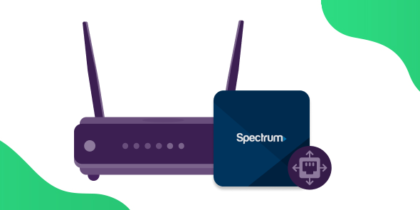Table of Contents
Plusnet is one of the most prominent ISPs available today due to its title as a triple-play service provider. With more than 25 years of experience, Plusnet specializes in providing high-speed network connectivity and great customer service at affordable price points.
It has everything from dual bands to smart network selection and everything in between. But even with Plusnet’s high-quality service, you might face a few difficulties related to network speed and latency.
This can result from bandwidth throttling or CGNAT restrictions but it can also be easily managed using a VPN. Here is everything you need to know about Plusnet and how a reliable VPN can help you get a much-improved network connection.
What is a Plusnet router?
After you sign up for the Plusnet Broadband contract, you can also add a free wireless Plusnet router to your order. There are multiple options available such as the Hub One, Hub Two, Hub Zero, etc.
Plusnet has developed better and better routers through the years to improve the quality of network service provided to their customers. With ADSL and fiber packages, high-speed network connectivity, and great price plans, you can’t really go wrong with a Plusnet router.
Why do you need a VPN for the Plusnet router?
Since Plusnet is a triple-play internet service provider, it covers all broadband, mobile, and landline services. Plusnet efficiently manages services in these domains, however, people have often complained about slower network speeds and this could imply the presence of bandwidth throttling.
While Plusnet denies any such allegations, you can still use a VPN to combat latency and buffers. This is possible because a reliable VPN can easily encrypt your network channel and hide your network activity. This prevents your ISP from keeping tabs on your online activity and throttling your internet bandwidth.
Another reason why you need a VPN for the Plusnet router is to combat CGNAT-based restrictions. Different ISPs use CGNAT to prevent the depletion of usable IPv4 addresses, but it can also impose certain issues when it comes to port forwarding. A VPN can also help you easily bypass these problems with only a few clicks.
How to set up a VPN on a Plusnet router
If you are planning on getting a VPN service, it is a good idea to set up the VPN on the router as well because it would improve the security of the entire network. Here are the general steps using which you can set up a VPN on a Plusnet router.
- Open a web browser.
- Enter the IP address of your Plusnet router (i.e 192.168.1.254) in the search field.
- Enter the username (Admin).
- Enter the password (available on the back of the router).
- Navigate to the section for Advanced Setup.
- Enable the VPN option there.
Now you can easily subscribe to a reliable VPN service and connect to their extensive server network so that you can get great internet connectivity and the best network security all at once.
What is CGNAT?
CGNAT or Carrier-grade NAT is an address translation mechanism explicitly designed to combat the depleting IPv4 pool. This technique introduces a new translation layer where different private addresses can be transformed into a single public IP.
While CGNAT has helped out a ton regarding the continuously decreasing IPv4 addresses, it has also created a few new issues. The prominent one is that it does not allow users to open up ports for an application.
How to Bypass CGNAT on Plusnet routers
Most of the ISPs today use CGNAT but many of them also provide you with the option to opt out of the CGNAT policy and get a dedicated IP instead. But using a VPN is often recommended as a means to resolve this issue as you can get the same perks but with much better security and fewer efforts.
Many reliable VPN services, like PureVPN, allow you to get around CGNAT using a Port Forwarding add-on. This feature resolves all your network connectivity problems with just a few simple clicks. Here’s how:
- Login to the PureVPN member area.
- Click the subscription tab.
- Click Configure.
- Apply your desired port settings.
- Click Apply settings.
Why Pick PureVPN?
PureVPN is one of the best VPN services in town. With more than 15 years of experience and an extensive network of 6500 servers around the world, PureVPN has been reshaping network connectivity for the better.
Here is why PureVPN is the perfect choice for your modern-day network needs:
- Prevent network attacks with AES 256-bit encryption.
- Supports a network of 6500+ servers in more than 78 countries.
- Hide your identity using IP masking to prevent throttled bandwidth.
- Get a 20GB connection to stream your favorite shows without lag.
- Simultaneously log-in on 10 devices to maximize network security.
- Enjoy 24/7 customer support to resolve any network problem you run into.
FAQS
Can I add VPN to the Plusnet router?
Yes, you can add a VPN to the Plusnet router to improve security on a network level. Just log into your Plusnet router and enable VPN so that you can connect to a reliable VPN service like PureVPN.
Can I install VPN directly on the router?
Yes, you can install a VPN on the router. After you have enabled VPN on the router you can easily subscribe to a VPN service, like PureVPN, and install the application on your devices.
How do I set up a VPN on my home router?
You can easily log into your router to enable the VPN option to set it up on your home network.
Can I install a VPN on my TP-Link router?
Yes, you can enable the VPN option on a TP-Link router to improve your network security.



